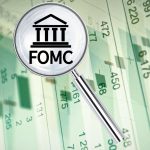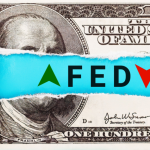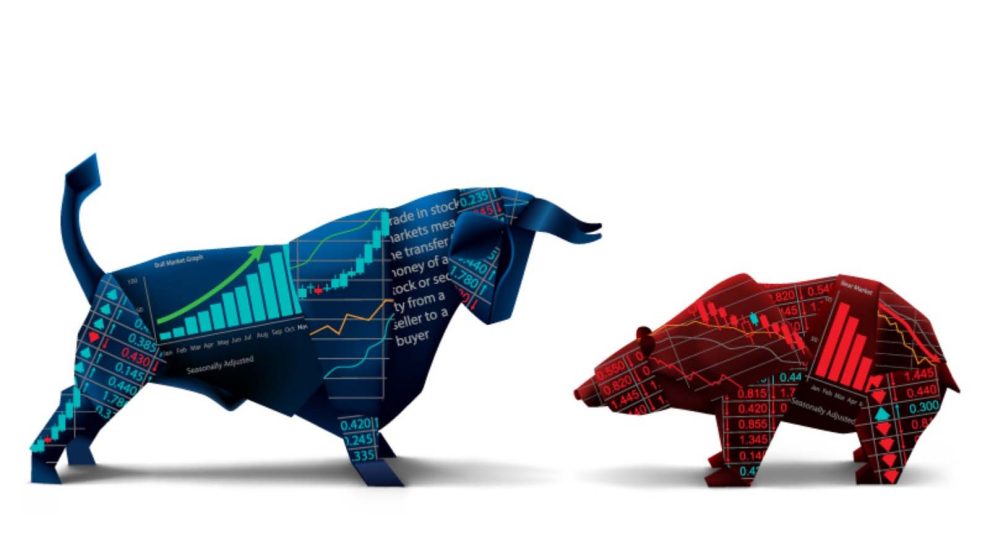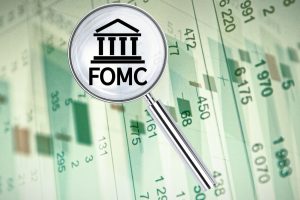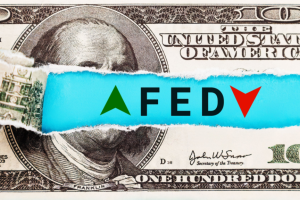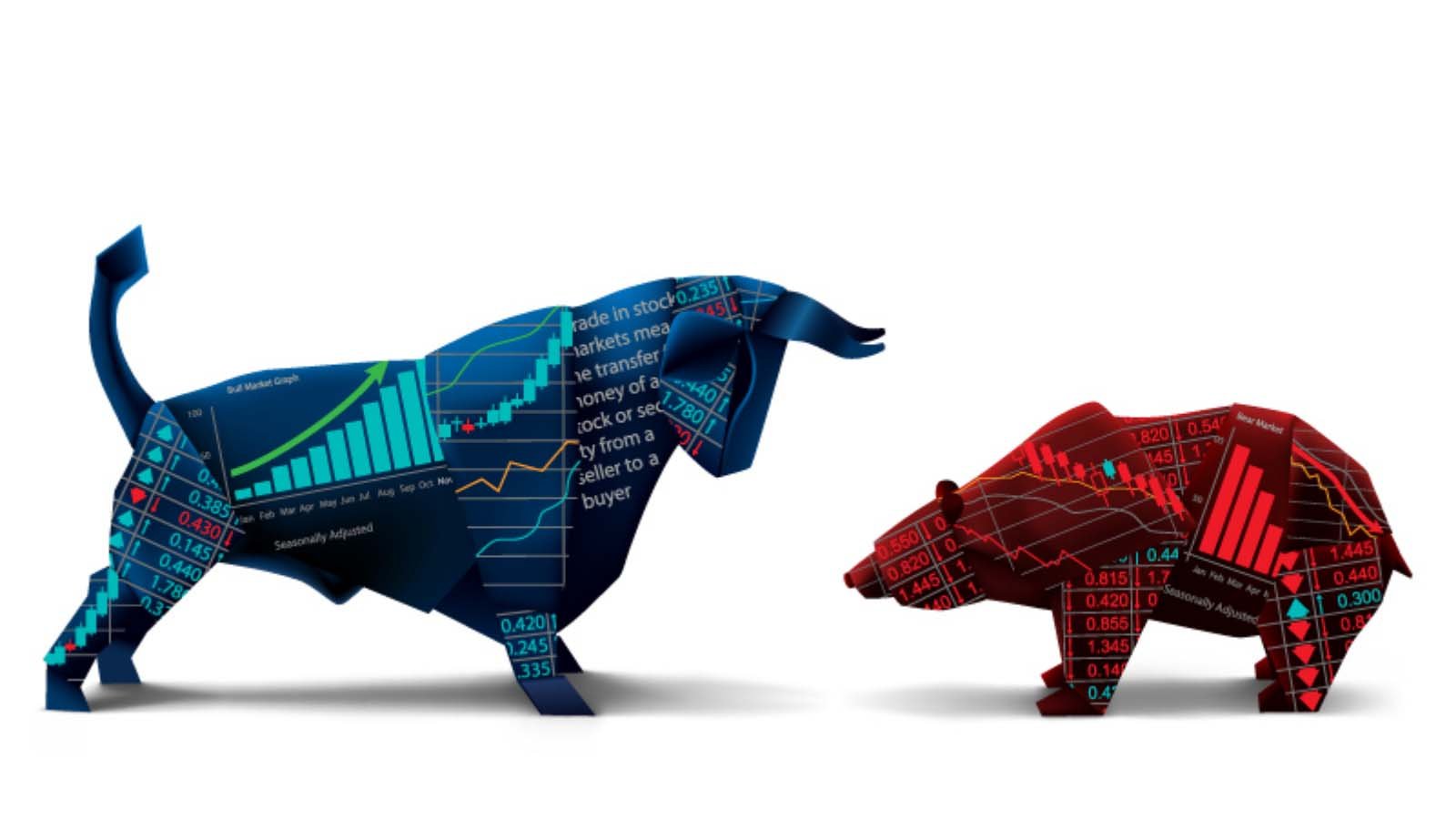
Will interest rate loosening trump prior tightening? … the bull and bear case … headlines from 2000 and 2007 … Eric Fry’s Great 2024 Sell-Off tomorrow night
Beware bulls predicting nothing but bullishness…
Similarly, beware bears spewing nothing but bearishness…
The reality is we’re in a complicated market with abundant crosswinds.
Given this, I suggest that you should listen to…
The Ursitorox.
I stumbled upon the Ursitorox online. It’s a mythical combination of bull and bear, and may God have mercy on my soul for showing you this image…

The bull/bear battle for economic/market superiority is on
From a 30,000-foot perspective, here’s where we are today…
On one hand, we have the Fed having just cut rates 50 basis points while forecasting plenty more cuts in the pipeline. This is a major economic tailwind. But it will require months for it to begin blowing with intensity.
On the other hand, we have the baked-in effects of one of the most aggressive rate-hiking campaigns in history. Despite the Fed’s interest rate cut last Wednesday, there remains plenty of economic tightness in the system that will require months to loosen.
Our economy sits somewhere in the middle. The issue is whether the forthcoming beneficial impacts of rate cuts will arrive before the detrimental lingering impact of rate hikes could deliver a knockout blow.
There are good cases to be made for both possibilities.
Last Friday, economic bellwether FedEx nosedived
The business services giant tanked 15% after reporting disappointing earnings thanks to what its CEO characterized as a “challenging quarter.”
While this wasn’t great news for FedEx investors, it was similarly bad news for our economy. After all, FedEx’s earnings/forward guidance are a fantastic barometer for business conditions.
From Fortune:
The heated debate over whether the Federal Reserve took too long before responding to signs of a softening economy just saw more fuel added to the fire.
On Thursday, FedEx shocked investors by missing quarterly expectations across the board and issuing more cautious guidance, blaming a pullback by manufacturing customers no longer willing to pay top dollar for priority shipping…
After missing expectations for the fiscal first quarter that ended on August 31, FedEx warned both full-year revenue growth and adjusted earnings would come in at the lower end of its forecast range…
And this comes from FedEx CEO Raj Subramaniam on the company’s earnings call:
We’re not assuming a significant comeback on the industrial environment in the rest of this calendar year. The magnitude of the Fed rate cuts [last week] signals the weakness of the current environment.
Meanwhile, in the wake of the Fed’s jumbo interest rate cut, something unexpected happened in the bond and futures markets…
Long-term bond yields rose, even though the Fed went big with rate cuts.
This bucks the traditional relationship between a big rate cut and treasury yield direction. Usually, we would expect to see yields fall for all sorts of reasons. For example…
Lower rates often reflect uncertain economic conditions, which seemingly would prompt investors to buy bonds for safety (driving prices up and yields down) instead of selling them (which pushes yields up) …
At the beginning of a rate-cut cycle, many bond investors would rush to buy bonds offering today’s relatively higher rates, knowing that they’ll be more valuable in tomorrow’s climate of lower rates. This buying pressure would push yields lower …
Lower rates are usually associated with reduced inflation expectations, which would drive long-dated bond yields lower …
Instead, between last Tuesday and Monday as I write, the 10-year yield has jumped from 3.60% to nearly 3.80%, and the 30-year yield has climbed from 3.91% to 4.13%. While these yields aren’t exceptionally high on a nominal basis, it’s their contrarian directional move that’s noteworthy.
Why is this happening?
Here’s MarketWatch with an answer:
Higher yields suggest that, despite the Fed’s big rate cut out of the gate, Wall Street was disappointed by what the central bank telegraphed about the months to come.
The article goes on to suggest that Powell’s so-called “careful” approach wasn’t what the bond market wanted to hear. Is this because bond traders are worried the Fed is already behind the curve in terms of preventing greater economic pain? That’s one interpretation from what we’re seeing in the futures market.
Despite the latest Dot Plot showing just two more quarter-point cuts this year, the CME Group’s FedWatch Tool puts the probability of three or four additional cuts at 71.6%.
Why would so many cuts be expected if our economic forecast calls for strength?
On the other hand, our economy has shown amazing signs of resilience for many months, proving bears wrong at every turn
And today, we have many economic indicators pointing toward not just the sidestepping of a recession, but a strengthening economy.
For example, last Friday, the Labor Department reported that the number of Americans applying for unemployment benefits fell to its lowest level in four months.
Here’s Newsweek:
According to the Labor Department, jobless claims fell by 12,000 to 219,000 for the week ending Sept. 14. Economists had expected claims to reach around 230,000, but the decline surpassed forecasts…
The recent drop in claims suggests the labor market remains resilient for now.
Also last week, the Commerce Department reported that retail sales edged higher in August.
From ABC News:
The data indicate that consumers are still able and willing to spend more despite the cumulative impact of three years of excess inflation and the higher interest rates intended to combat those rising prices.
Then we have the Fed’s latest GDP estimates that projects 2.0% growth through 2027. Sure, they could be wrong, but they’ll have to be wrong by a lot for that 2.0% growth to end up being negative.
Overall, Apollo’s Chief Economist Torsten Sløk offers a good sum-up of the bull case for the economy:
With financial conditions easing further because of the 50bps Fed cut and still strong tailwinds to economic growth from the CHIPS Act, the IRA, the Infrastructure Act, strong AI spending, and strong defense spending, the bottom line is that there are no signs of the economy entering a recession.
And because of these tailwinds, there are no reasons to expect a recession. On the contrary, the incoming data seen in our chart book, in particular jobless claims and the Atlanta Fed GDP Now, are pointing to a reacceleration in employment growth over the coming months.
(If he’s right, that opens the door to an inflation reacceleration too, but we’ll save that conversation for later.)
So, how do we balance these valid bullish/bearish points?
Well, what if the truth is that half of U.S consumers are already in a recession, and the other half will skirt past one with ease?
GDP numbers might not indicate a recession, but that won’t make it easier for the lower-income Americans who are having trouble making ends meet.
According to a June survey by Affirm, 59% of Americans believe we’re in a recession. Meanwhile, the number of people living paycheck-to-paycheck continues climbing.
From MarketWatch:
[Our August survey] results indicate that 66.2% of Americans feel like they’re living paycheck to paycheck. Respondents struggling to make ends meet span demographics, including genders, generations and incomes.
At the same time, for wealthier Americans, the last few years have been pretty amazing as the value of their assets have soared. Plus, they’ve been able to make 5% risk free on their cash.
Here’s The New York Times:
High interest rates are not really pinching Americans who own assets like houses and stocks…
For many people in middle and upper income groups… this is a fairly sunny economic moment. Their house values are mostly holding up in spite of higher rates, stock indexes are hovering near record highs, and they can make meaningful interest on their savings for the first time in decades.
Is it not possible that we could experience something akin to a consumer recession and non-recession simultaneously?
Similarly, what if part of our stock market is already in a bear market, while another part is enjoying a monster bull that will continue?
Over the last two years, the S&P is up 52%. This is phenomenal.
But for plenty of companies that service lower-income Americans, over this same period, they’ve fallen into a bear market. Here are a few examples:
- Dollar General (DG): down 63%
- Dollar Tree (DLTR): down 50%
- Advance Auto Parts (AAP): 74%
- Big Lots (BIGGQ): down 99% and going out of business
- PayPal (PYPL): down 16% after having been down as much as 45%
- Western Union (WU): down 4% after having been down as much as 26%
Meanwhile, we could point toward additional companies that aren’t in a bear market but are mostly treading water.
Could we not have a “tale of two markets” with bulls and bears holding domain over various corners of Wall Street?
But what about the statistics surrounding the fantastic performance of stocks in the wake of rate cuts?
Does that give the edge to the bulls?
It does. And we certainly want to have exposure to the market today based on those statistics.
But we need to maintain some humility. After all, Geiger Capital pointed out that the last two times the Fed’s first cut was 50+ basis points were January 3, 2001, and September 18, 2007. Following the 2001 cut, the S&P fell 39%. In 2007, the drop was 54%.
Now, do I personally think this will repeat?
No, but I’ve been wrong before. And so, too, has Wall Street, the financial media, and the experts.
To illustrate, here’s a fun trip down memory lane from the year 2000, shortly before the Dot Com meltdown (which started in March 2000):
- “Why the Markets Will Keep Booming” – Newsweek, February 7, 2000
- “The Ever-Expanding Stock Market” – The Washington Post, March 9, 2000
- “Economy Still Flying High, Fed Says” – CNN Money, April 5, 2000
- “Stocks Are Safe Again: The Economy’s Solid, Inflation’s Under Control” – U.S. News & World Report, January 17, 2000
- “No End in Sight for the Bull Market” – Wall Street Journal, February 14, 2000
And let’s not leave out 2007/2008:
- “Subprime Woes Won’t Derail Economy” – Reuters, April 3, 2007
- “Why the U.S. Economy Will Keep Growing” – BusinessWeek, March 5, 2007
- “No Recession in Sight, Say Economists” – The New York Times, July 18, 2007
- “The Market’s Resilience is Impressive” – Forbes, August 6, 2007
- “Stocks Set to Soar” – Barron’s, April 28, 2008
- “The Global Economy is Sound” – Financial Times, March 7, 2008
Just a reminder that no one really knows anything.
So, what do we do, given that both bulls and bears have valid points about today’s economy and market?
Well, the first part of the answer is something regular Digest readers know is coming…
We recognize that the market is not one huge monolith that rises and falls in unison. It’s made up of thousands of different stocks that perform wonderfully and poorly at different times, for different reasons, and in different market environments.
So, first, we resist the temptation to label anything with black-and-white certainty. As we’ve seen above, two things can be true at once.
Second, we focus on the specific stocks inside our own portfolios, not the headline index numbers (unless you’re invested in index funds).
But even after narrowing our focus, we need to recognize something important…
We could be wrong.
Feeling bearish? Wanting to sell down your positions?
That would have been an awful idea one year ago. It might prove to be an awful idea one year from now.
Of course, our tour through the headlines above reveals that bullishness – even when it feels justifiable – can be horribly wrong, often peaking at the exact wrong time.
This points toward the need for help in knowing when to hold, and as the song says, when to fold.
This brings us to tomorrow night
As we began highlighting last week in the Digest, tomorrow at 8 PM ET, our macro expert Eric Fry is holding a live event called The Great 2024 Sell-Off.
Joining Eric will be the self-described “worst investor in the world” who decided to do something about his awful investment results.
This investor created a suite of investment tools to help better time his entries and exits in the market. He engineered the tools to reflect market data, freeing him from the need to be right about his predictions.
Eric took these tools and back-tested them on his multi-decade track record. He found that his already impressive results would have improved substantially.
As we look at today’s market, these tools can help provide you more peace about remaining in the market, even if you feel some measure of concern. Tomorrow night, you’ll get all the details, as well as Eric’s thoughts on the conditions we’re headed into today.
Click here to immediately reserve your seat.
Coming full circle, both bulls and bears have plenty of evidence to support their forecasts today
And given the size of our economy and stock market, both could be right… at the same time… just in different areas.
While this might paralyze some investors, it doesn’t have to leave you wondering what to do. Join Eric tomorrow to see how putting technology in your corner can make a world of difference in your investment results, as well as in your mental peace.
On a related note, I can confirm that Eric’s special guest is not the Ursitorox.
Have a good evening,
Jeff Remsburg

